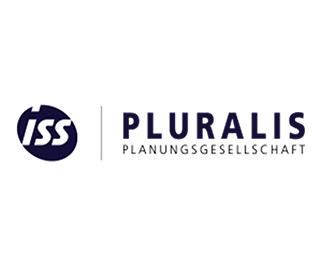General information

- Service provider: ISS Pluralis GmbH
- Product name: Buildings go green
- Certification system: DGNB System for Buildings In Use, Version 2020
- Validity: until February 2027
More information on the product
Our evaluation
The conformity check for the product "Buildings go green" was successfully completed. The test result was confirmed in all points after independent evaluation by the certification body of the DGNB.
For further information, see the requirements specification, which summarises the documents to be submitted for certification of follow-up projects based on the recognised service available here.
42.1%Guaranteed degree of fulfilment | + 31.3%Maximum additional degree of fulfilment |
Recognition result in detail
| No. | Criteria and indicators | Fixed indicator Evaluation (points) | Variable indicator Evaluation (points) |
|---|---|---|---|
| 1.1 | Target agreement | 14 | |
| 1.2 | Level of ambition, climate action roadmap | 6 / 8 / 10 / 16 | |
| 2.1 | Collecting data on energy | 25 | |
| 3.1 | Data analysis | 5 | |
| Measures for optimisation based on | |||
| 4.1.1 | Expertise, stakeholder dialogue in regularly scheduled meetings | 5 | |
| 4.1.2 | Calculation models with customised settings | 2,5 | |
| 4.1.3 | Technical monitoring | 0 / 2,5 | |
| 4.1.4 | Comparison of ecological, economic and social aspects | 0 / 2,5 | |
| 5.1 | Life Cycle Assessment (LCA) of the building | 10 |
| No. | Criteria and indicators | Fixed indicator Evaluation (points) | Variable indicator Evaluation (points) |
|---|---|---|---|
| 1.1 | Target agreement | 5 | |
| 1.2 | Water stress | 5 | |
| 2.1 | Collecting data on water | 25 | |
| 3.1 | Data analysis | 5 | |
| Measures for optimisation based on | |||
| 4.1.1 | Expertise, stakeholder dialogue in regularly scheduled meetings | 10 | |
| 2.1 | Comparison of ecological, economic and social aspects | 0 / 5 |
| No. | Criteria and indicators | Fixed indicator Evaluation (points) | Variable indicator Evaluation (points) |
|---|---|---|---|
| 1.1 | Target agreement | 0 / 5 | |
| 2.1 | Collecting data on waste | 0 / 25 | |
| 2.2 | Enquiry about disposal routes | 0 / 5 | |
| 3.1 | Data analysis | 0 / 5 | |
| Measures for optimisation based on | |||
| 4.1.1 | Expertise, stakeholder dialogue in regularly scheduled meetings | 0 / 10 | |
| 4.1.2 | Information on waste reduction and the increase of recycling rates | 0 / 5 | |
| 4.1.3 | Incentive systems on waste reduction and the increase of recycling rates | 0 / 5 |
| No. | Criteria and indicators | Fixed indicator Evaluation (points) | Variable indicator Evaluation (points) |
|---|---|---|---|
| 1.1 | Target agreement | 10 | |
| 2.1 | Collecting data on costs | 15 | |
| 2.2 | Standardised cost structure | 5 | |
| 3.1 | Cost analysis | 5 | |
| Measures for optimisation based on | |||
| 4.1.1 | Expertise, stakeholder dialogue in regularly scheduled meetings | 10 | |
| 4.1.4 | Comparison of ecological, economic and social aspects | 0 / 15 |
| No. | Criteria and indicators | Fixed indicator Evaluation (points) | Variable indicator Evaluation (points) |
|---|---|---|---|
| 1.1 | Personnel responsibility | 5 | |
| 2.1 | Checklist for transparency on building documentation | 5 | |
| 2.2.3 | Recorded inspection of four aspects | 12,5 | |
| 2.3 | Warranty and maintenance management | 0 / 2,5 | |
| 2.4 | Building connectivity | 0 / 2,5 | |
| 3.1 | User survey | 0 / 7 | |
| 3.2.1 | Basic complaint management | 0 / 4 | |
| 3.3.1 | Vacancy rate is documented | 0 / 5 | |
| 3.3.2 | Occupancy density is documented | 0 / 5 | |
| 4.1 | Consequences of climate change | 10 / 15 | |
| 4.2 | Adaptations for climate change | 2 / 4 | |
| 4.3 | Hazards on the site | ||
| 4.3.1 | Hazard classification of air quality | 0 / 2 | |
| 4.3.2 | Hazard classification of radon concentration | 0 / 2 | |
| Potential analysis and climate action roadmap | |||
| 5.1.1 | Local context | 0 / 2 | |
| 5.1.2 | Building energy | 6 | |
| 5.1.3 | User energy | 6 | |
| 5.1.4 | Supply systems | 6 | |
| 5.1.5 | Renewable energy | 10 | |
| 5.1.6 | Climate action roadmap | 10 | |
| 6.1.1 | Action plan | 10 / 15 | |
| 6.1.2 | Financial plan | 5 |
| No. | Criteria and indicators | Fixed indicator Evaluation (points) | Variable indicator Evaluation (points) |
|---|---|---|---|
| 1.1 | Guideline on pollutants and hazardous materials | 0 / 2 / 4 / 6 / 8 | |
| 1.3 | Guideline on deconstruction and recycling | 0 / 6 | |
| 1.4.1 | Guideline on construction waste: requirements regarding separate waste in fractions | 0 / 4 | |
| 1.4.2 | Guideline on construction waste: requirements regarding on-site recycling and/or reuse | 0 / 4 | |
| 2.1.1 | Guideline for sustainable building operation management: procuring energy-efficient electrical products | 0 / 4 | |
| 2.1.2 | Guideline for sustainable building operation management: selecting sustainable cleaning agents | 0 / 4 | |
| 2.2.1 | Guideline for selecting suppliers and service providers: sustainability aspects | 0 / 4 | |
| 2.2.2 | Guideline for selecting suppliers and service providers: preferred selection of local service providers | 0 / 4 | |
| 3.1.1 | Guideline on biodiversity: requirements for the handling of invasive plant species | 0 / 4 | |
| 3.1.2 | Guideline on biodiversity: requirements for support and protection of domestic species | 0 / 4 | |
| 3.1.3 | Guideline on biodiversity: requirements for greening of façade and roof areas | 0 / 4 | |
| 3.1.4 | Guideline on biodiversity: requirements for a maintenance contract | 0 / 4 | |
| 4.1 | Guideline for technical monitoring | 0 / 4 |
| No. | Criteria and indicators | Fixed indicator Evaluation (points) | Variable indicator Evaluation (points) |
|---|---|---|---|
| 1.1.1 | Target agreement (target value) | 15 | |
| 2.1 | Collecting data | 0 / 5 / 10 / 15 / 20 | |
| 3.1 | Data analysis | 0 / 10 | |
| Measures for optimising operation based on | |||
| 4.1.1 | Expertise, stakeholder dialogue in regularly scheduled meetings | 5 | |
| 4.1.2 | Complaint management | 0 / 5 | |
| 4.1.4 | Technical monitoring | 0 / 5 | |
| 4.1.5 | Comparison of ecological, economic and social aspects | 0 / 5 |
| No. | Criteria and indicators | Fixed indicator Evaluation (points) | Variable indicator Evaluation (points) |
|---|---|---|---|
| 1.1.1 | Promotion of user communication | 5 / 10 | |
| 1.2 | User interaction | 0 / 10 / 15 | |
| 2.1 | Family-friendly facilities | 0 / 10 / 15 | |
| 3.1 | Requirements for a barrier-free building use | 0 / 5 / 10 / 15 | |
| 3.2 | Degree of accessibility | 0 / 5 / 10 / 15 / 20 / 25 | |
| 3.3 | Concept for increasing accessibility | 0 / 10 | |
| 4.1 | Health facilities | 0 / 10 / 15 | |
| 4.2 | Quality of space | 0 / 10 / 15 |
| No. | Criteria and indicators | Fixed indicator Evaluation (points) | Variable indicator Evaluation (points) |
|---|---|---|---|
| 2.1.6 | Charging stations for electrically powered bicycles | 0 / 10 | |
| 4.1 | E-mobility infrastructure in the building Alternative A: mobility strategy) | 0 / 5 | |
| 5.1.2 | Programs for promoting carpooling are available | 0 / 10 |
Your contact

Alice Gerstner
Consultant Certification Buildings In Use
- Phone: +49-711-722322-80
- Email: a.gerstner@dgnb.de
